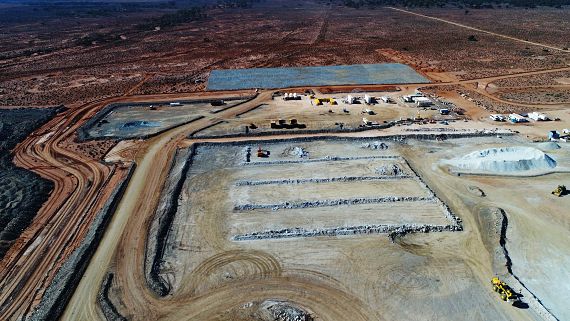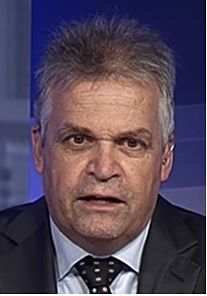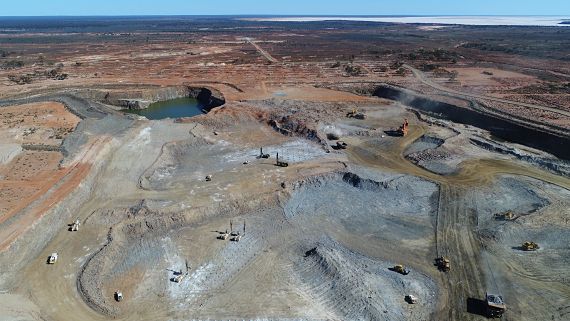There is a not-small amount of disquiet among investors over the continuing suspension of trading of the shares of Alliance Mineral Assets (AMA). The company called for a trading halt on 1 March 2018, followed by a suspension on 6 March 2018.
|
AMA stock price
|
37.5 c
|
|
52-week range
|
19 – 46 c
|
|
PE (ttm)
|
--
|
|
Market cap
|
S$202 m
|
|
Shares outstanding
|
538 m
|
|
Dividend
yield (ttm)
|
--
|
|
1-year return
|
90%
|
|
Source: Bloomberg
|
This is connected specifically to the affairs of AMA, and has nothing to do with the Bald Hill Project -- that can be the only conclusion since AMA's JV partner, Tawana Resources, has not called for a trading halt on its stock listed in Australia.
In fact, the news that continues to come out of their lithium-tantalum project in Western Australia inspires confidence.
Mine development and production is on schedule, offtake agreements are ready to be honoured, and plans hinted of further exploration of the vast untapped grounds and resources.
And, not forgetting, in the wake of supply issues that have cropped up of late in Congo and Chile, the Bald Hill Project faces no sovereign risk.
Below, we excerpt an interview that Michael Washbourne of Australia's Paydirt did with Tawana's CEO, Mark Calderwood, in its March 2018 edition.
Along with that, we publish some pictures that contractor SMS Innovative Mining Solutions shared on HotCopper forum that show how transformed the Project is.
 Photo: SMS Innovative Mining Solutions.
Photo: SMS Innovative Mining Solutions.
|
Excerpts from Paydirt:
Hong Kong-listed Burwill has committed to taking the first two years of offtake from Bald Hill for a fixed price of $US880/t.
 Tawana Resources CEO Mark Calderwood: "We've got about 1,500sq km and we've explored about 10sq km....There's a lot of work ahead of us, there's a decade of drilling ahead of us."Calderwood said his company was still fielding inquiries about available concentrate as various lithium end-users continue to vigorously hunt down potential new sources of supply. Tawana Resources CEO Mark Calderwood: "We've got about 1,500sq km and we've explored about 10sq km....There's a lot of work ahead of us, there's a decade of drilling ahead of us."Calderwood said his company was still fielding inquiries about available concentrate as various lithium end-users continue to vigorously hunt down potential new sources of supply.
"If we were coming on now, if we were still uncommitted, it would be a fantastic position to be in, because the amount of incoming inquiries is just tremendous," he said.
"What we're finding is the bigger companies are the last to come knocking and the more conservative entities are the ones missing out on a slice of the pie from the three Aussie mines coming on this year. We all committed probably six or more months ago. We'll probably deliver our first shipment on the anniversary of our first off-take agreement."
Commissioning of the DMS plant at Bald Hill began last month ahead of the first scheduled shipment of concentrate during March.
 Photo: SMS Innovative Mining Solutions. Photo: SMS Innovative Mining Solutions.
Once mining and processing activities are comfortably chugging along, Tawana plans to ramp up exploration work at Bald Hill and the neighbouring Cowan project in a bid to grow the available resource inventory.
"We've got about 1,500sq km and we've explored about 10sq km, so only a small fraction of the ground," Calderwood said. “There are quite a lot of known lithium-bearing pegmatites that haven't been drilled, either at all or we haven't touched for more than a year. There's a lot of work ahead of us, there's a decade of drilling ahead of us."
|
TAWANA stock price
|
43 c
|
|
52-week range
|
15 – 58 c
|
|
PE (ttm)
|
--
|
|
Market cap
|
A$217 m
|
|
Shares outstanding
|
505 m
|
|
Dividend
yield (ttm)
|
--
|
|
1-year return
|
153%
|
|
Source: Bloomberg
|
Tawana recently signed an off-take agreement with an unnamed tantalum group for at least 600,000lb of tantalum concentrate from Bald Hill until the end of 2020. Discussions are continuing with other third parties for the sale of excess tantalum concentrate.
Calderwood, who co-authored a book on WA pegmatites, is bullish on the future of the burgeoning battery minerals industry, but is not anticipating huge price rises for the main commodity his company will produce.
"Spodumene prices might go up a bit, then down a bit, but it's not going to take off. They're not going up 50% in a year or anything like that," he said.
"The pricing has only been incremental, which is good for the industry. You don't want raw product prices going up 30% a year because it just damages the end-user markets. A 10% increase or drop is reasonable and the market can handle that, but big jumps are not ideal."
The full article is available here.
|
 Photo: SMS Innovative Mining Solutions.
Photo: SMS Innovative Mining Solutions. 







